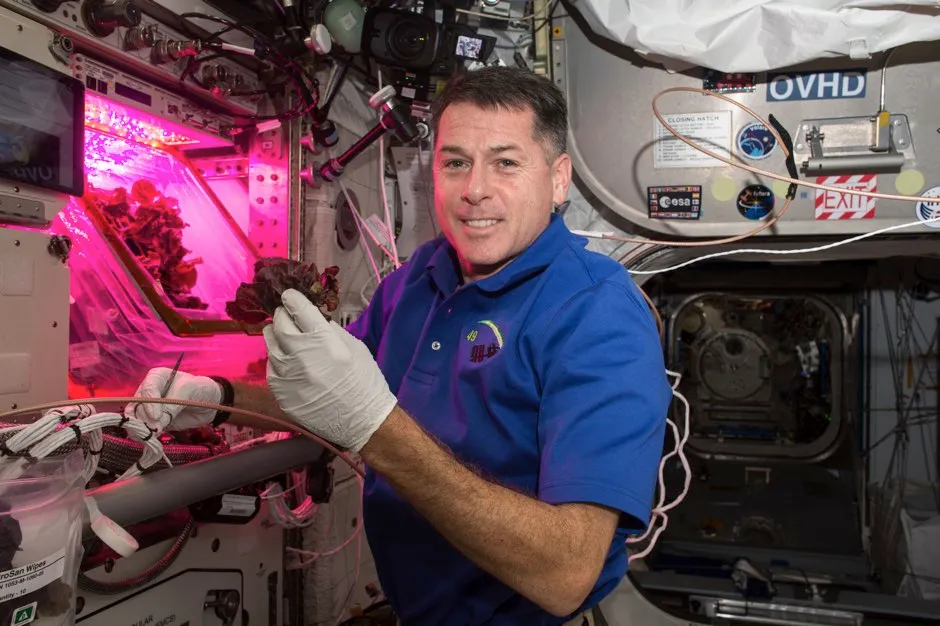NASA astronauts have reported that lettuce grown entirely in space is as nutritious and safe to eat as lettuce grown on Earth.
A report published in the journal Frontiers In Plant Science revealed that the space-grown lettuce was similar in composition to Earth-grown control samples, while some plants were even richer in a number of elements, including potassium, sodium and zinc.

The experiment involved crops being grown in individually sealed units of ceramic soil under red LED lighting for 33 to 56 days.
Astronauts on board the International Space Station (ISS) intermittently watered the crops by injecting them through a tube.
Once fully grown, the plants were then harvested and either eaten, deep-frozen or returned to Earth for analysis.
Although the lettuce did have higher levels of bacteria, the crops were not found to carry any dangerous bacteria such as E.coli or salmonella.
It is believed that the ability to successfully grow food in space could be crucial for long-duration interstellar missions, such as NASA’s first crewed mission to Mars – scheduled to depart within the next decade.
Read more about food in space:
- 6 out-of-this-world experiments recreating space on Earth
- Major Tim Peake plants trees grown from space-faring seeds
- Why the first plant grown on the Moon is a significant milestone in space exploration
- What would astronauts eat on Mars?
Reader Q&A: Can trees grow in space?
Asked by: Sam Tree, Shoreham
Experiments on the ISS have shown that young spruce tree seedlings do grow in microgravity, but they don’t look quite the same. The seedlings grow faster, and the pine needles don’t point downward so much.
DNA analysis shows that several plant genes are more active in space, but we’re still waiting to find out the long-term effects on larger plants.
Read more:

